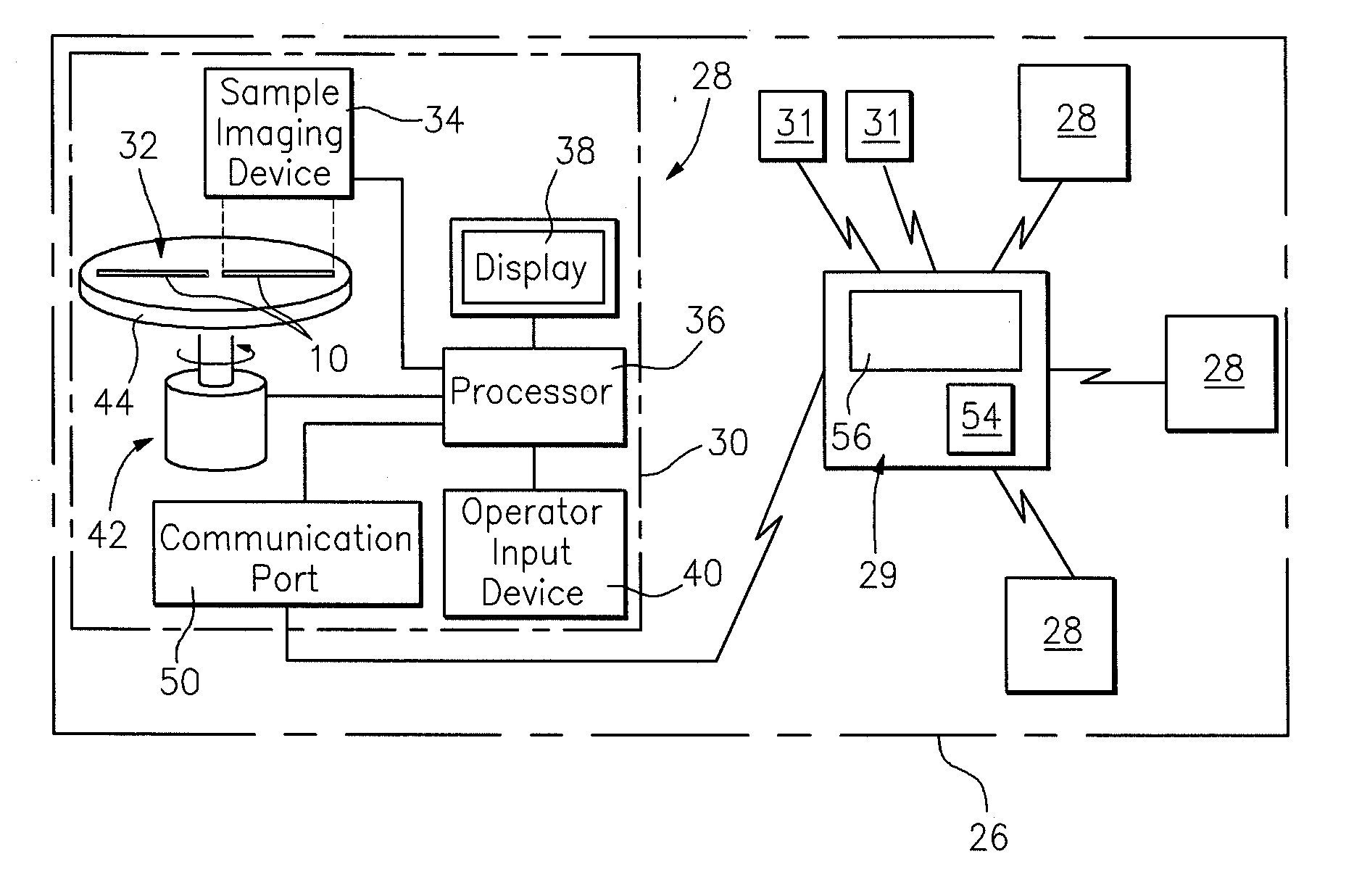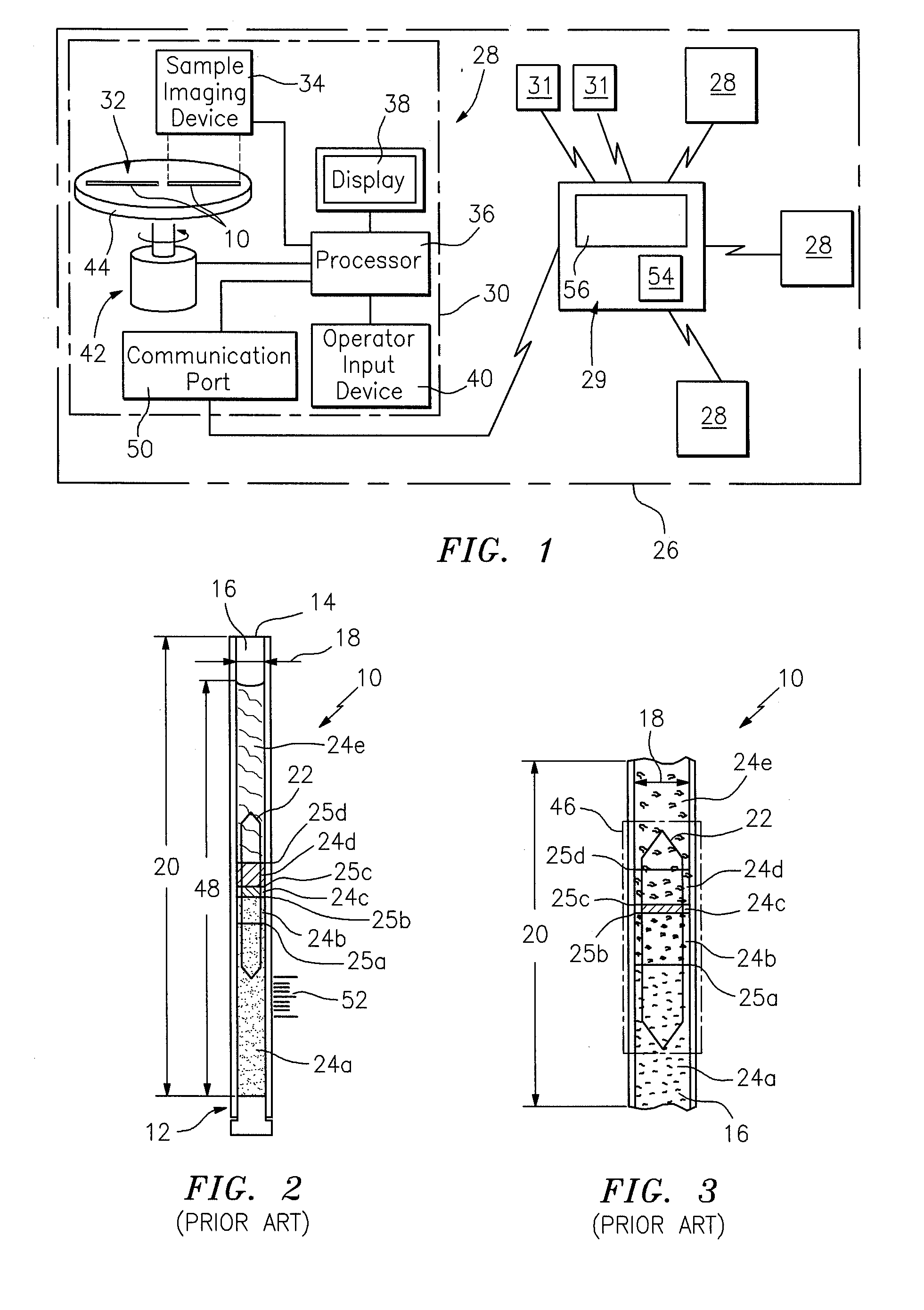Method and apparatus for remotely performing hematologic analysis utilizing a transmitted image of a centrifuged analysis tube
a centrifuged and transmitted image technology, applied in the field of methods and apparatus for remotely performing hematologic analysis utilizing a transmitted image of a centrifuged analysis tube, can solve the problems of inaccurate data based on that band width, achieve the effect of avoiding cost, increasing the level of care available to the patient from the healthcare provider, and performing in a very short period of tim
- Summary
- Abstract
- Description
- Claims
- Application Information
AI Technical Summary
Benefits of technology
Problems solved by technology
Method used
Image
Examples
first embodiment
[0033]In the operation of the present system, unprocessed image signals are sent from the analysis device 28 to the remotely located analysis station 29. In this embodiment, the operator of the analysis device 28 images a centrifuged sample using the analysis device 28, and the “unprocessed” image of the centrifuged sample is sent to the remotely located analysis station 29. The remote analysis station 29 may be operated by a technician sufficiently trained so that he or she may analyze the sample image in a non-CLIA waived setting. The processor 54 within the remote analysis station 29 uses image processing algorithms to analyze the sample bands 24 of interest, and produces information based on the physical characteristics of the different bands 24, as described above. The image of the bands 24 of interest within the centrifuged sample is displayed on the data display of the analysis station 29 to allow the technician to perform a visual analysis of the sample image. In this embodi...
second embodiment
[0034]In the operation of the present system, image signals produced by the sample imaging device 34 within the local analysis device 28 are at least partially processed within the local analysis device 28, and are subsequently sent to the remotely located analysis station 29 where a trained technician may analyze the processed results and the sample image. The analysis enabled by the remote analysis station 29 and the trained technician can serve a variety of different functions. For example, the display screen 56 of the remote analysis station 29 permits a trained technician to view the actual sample image, including substantially all of the radial width 18 and axial length 20 of the sample residing within the internal cavity 16 of the tube 10 in the region where the float 22 resides after centrifugation. The discerning eye of a trained technician can assess image variables that are not accounted for in even the most comprehensive automated system. Consequently, the ability of the...
PUM
 Login to View More
Login to View More Abstract
Description
Claims
Application Information
 Login to View More
Login to View More - R&D
- Intellectual Property
- Life Sciences
- Materials
- Tech Scout
- Unparalleled Data Quality
- Higher Quality Content
- 60% Fewer Hallucinations
Browse by: Latest US Patents, China's latest patents, Technical Efficacy Thesaurus, Application Domain, Technology Topic, Popular Technical Reports.
© 2025 PatSnap. All rights reserved.Legal|Privacy policy|Modern Slavery Act Transparency Statement|Sitemap|About US| Contact US: help@patsnap.com


